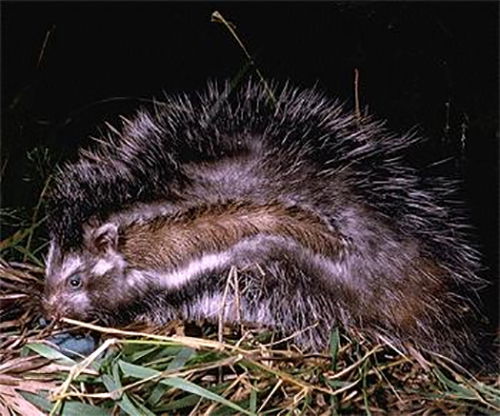Oh Rats!
Sand Rat, מינוזיג - MinoZig, CC BY-SA 4.0 https://creativecommons.org/licenses/by-sa/4.0, via Wikimedia Commons
Muridae
by Inspector Barry Mins on February 15, 2022Hey kids, welcome back to our series on the mysteries of created kinds!
Last week we found ourselves looking for a large kind of lizard that is found throughout the world. This week we are also looking for a large kind found worldwide, except this week, we are looking for a mammalian kind.

This kind has nearly fourteen hundred species found throughout the world. Even an Antarctic island with a research station has a colony of this kind on it.1 Like last week, because there are so many species, we are only going to cover some of the more popular and unique species. Most of this kind is quite small and provide food for many carnivores.2
One particular species is particularly unique, with hair that mimics a porcupine. More dangerously than that, it is poisonous to any animal that attacks it. The poison comes from a specific plant in its diet. The toxin in the plant is transferred from the plant cells and up into the hair of the mammal so that if it is bitten, the poison will be ingested by the predator.3

Lophiomys imhausi, Maned Rat
Kevin Deacon, CC BY-SA 3.0 http://creativecommons.org/licenses/by-sa/3.0/, via Wikimedia Commons
Other, more commonly known members of this kind have been used in medicinal research for a long time.4 Many are sold as pets as well. The pet store I shop at always has several of this kind available, often in multiple colors. However, when wild, they are often pests, and you may even have special traps out for them in certain areas of your home.
This kind is known for reproducing quickly and making lots of babies. In some cases, both parents participate in raising the young, and the babies mature more rapidly under the care of both parents.5 In some species that live in highly seasonal climates, the urge to breed is triggered by the arrival of new grass following the seasonal rains.6 Some species will have up to nine babies at a time.7

Meriones unguiculatus, Mongolian Gerbils
H. Zell, CC BY-SA 3.0 https://creativecommons.org/licenses/by-sa/3.0, via Wikimedia Commons
Has anyone figured it out yet? This week’s kind is the Muridae, or the mice, rats, and gerbils. Your opinion of these created rodents likely varies depending on where they live and if they are in your home or outside. However, they are found almost everywhere, so you likely don’t have to look too far to find one. Next week we head to the seaside, looking for some seabirds.
Try out this fun word search!
Clue
Your clue for the week is:
These white sea birds are found around most of the world’s oceans and like to catch their food by diving into the water.
Footnotes
- Paul Chakalian, “Killing rats to save birds as glaciers recede,” EarthSky, 12/08/2014, Accessed 02/11/2022, https://earthsky.org/earth/killing-rats-to-save-birds-as-glaciers-recede/. See all footnotes
- Burt P. Kotler, Joel S. Brown, and Oren Hasson, “Factors affecting gerbil foraging behavior and rates of owl predation,” Ecology 72, no. 6 (1991): 2249-2260. See all footnotes
- Fritz Vollrath, Jonathan Kingdon, Bernard Agwanda, Margaret Kinnaird, Timothy O’Brien, Christopher Holland, Thomas Gheysens, and Maxime Boulet-Audet, “A poisonous surprise under the coat of the African crested rat,” Proceedings of the Royal Society B: 279, No. 1729 (2012). See all footnotes
- Nancy A. Jenkins, Neal G. Copeland, Benjamin A. Taylor, and Barbara K. Lee, “Organization, distribution, and stability of endogenous ecotropic murine leukemia virus DNA sequences in chromosomes of Mus musculus,” Journal of Virology, 43, no.1 (1982), 26-36. See all footnotes
- R.W. Elwood, and D.M. Broom. “The influence of litter size and parental behavior on the development of Mongolian gerbil pups,” Animal Behavior, 26 (1978), 438-454. See all footnotes
- Herwig Leirs, Ron Verhagen, and Walter Verheyen, “The basis of reproductive seasonality in Mastomys rats (Rodentia: Muridae) in Tanzania,” Journal of Tropical Ecology, 10 (1994), 55-66. See all footnotes
- William G. Breed, Chris M. Leigh, and Eleanor J. Pierce, “Reproductive biology of the mice and rats (Family Muridae) of New Guinea-diversity and evolution,” Records of the Australian Museum, 72, no. 5 (2020), 3030-316. See all footnotes
- © 2025 Answers in Genesis
- Privacy Policy
- Contact
- About
